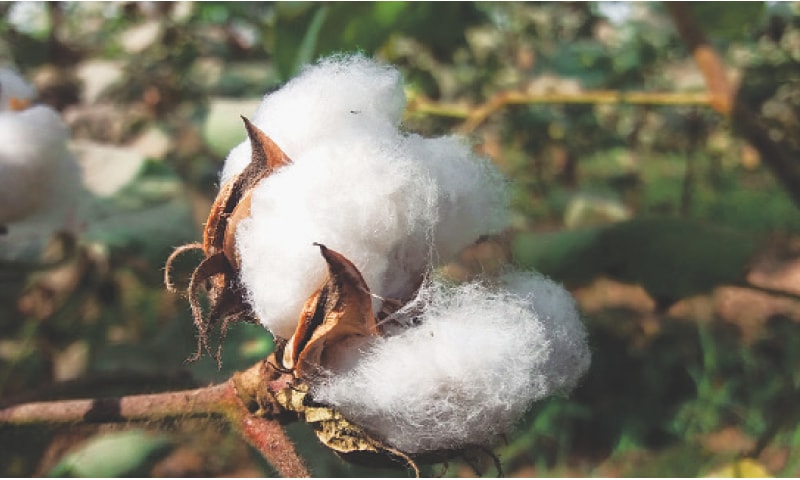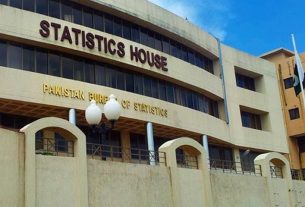As the cotton crop enters a crucial phase of its life cycle, it raises assorted concerns for the planners and the textile industry. Both are keeping their fingers crossed as the weather turns anti-cotton — long spells of hot and humid weather, worsened by floods, causing an increase in pest pressure. And September, normally considered a make or break month, is about to start.
The situation in Punjab, which contributes over 70 per cent of the crop, is more worrisome.
The government has set a production target of 15 million bales this year with a goal of 25m bales by 2025. Therefore, Punjab has been told to jack up its production to 10m bales from 6.8m bales last year — a 32pc increase.
The current year represents the first year in achieving this colossal target. And the government is already failing.
Punjab started on the wrong foot this year. It had planned to sow cotton over 5.3m acres — a herculean task in itself given the competition from rice and sugarcane that have elbowed into cotton-growing areas. Punjab claims to have planted 5m acres of cotton crop however the Space and Upper Atmosphere Research Commission (Suparco), based on its satellite imagery, contends only 4.6m acres were sown.
‘The Indian ban on imports means cotton may have to be sourced from the US, increasing freight costs by up to four times and causing lags of 10-12 weeks’
Punjab considers its figures more credible since they are based on surveys of individual villages and farmers. Nonetheless, the controversy is there.
Punjab also lists a few other positive factors that may help hike up its production and compensate for the acreage loss. On average, the plant population has increased by 1,000 plants per acre in the province.
Early Kharif water shortage, which was more than 50pc for Sindh and 40-45pc during the entire season last year, has dropped to 10-15pc this year. The Indus River System Authority depleted Mangla Dam thrice this year to help sow cotton and is now struggling to fill the lake. Furthermore, germination was better and the crop, by and large, has escaped early pest attacks.
However, as the weather turns anti-crop, the Punjab authorities estimate that they would be able to increase cotton crop cultivation to 7m bales at best, a 2pc increase over the 6.8m bales cultivated last year.
The calculations are based on two factors: weather and pesticides quality. River Sutlej runs through the core cotton belt and if it overflows, it spells trouble for the crop. The Indian side has warned of 200,000 cusecs being released at the entry point (just South of Lahore), which could recede to 80,000 cusecs by the time it reaches the southern part of the province where cotton is cultivated.
“Eighty thousand cusecs will be too much for the belt,” says Zafar Hayat, farmer and cotton crop in-charge of the Farmers Associates Pakistan. The area could withstand an inflow of 40,000 cusecs but at 80,000 cusecs, massive areas along the banks will be inundated and humidified.
And River Sutlej is not the only river that poses this threat; others are also overflowing and turning the water-weather cycle humid. With temperatures during the day hovering around 40 degrees Celsius, and 30°C at night, pest pressure will increase further, Mr Hayat fears.
Media reports suggest that jassid and whitefly have already attacked the crop in South Punjab and are joined by thrips and pink bollworm. Though these pests have not crossed the economic threshold level yet, they are lurking close to it.
“People have lost faith in pesticides and are reluctant to use them because of quality issues,” says Naeem Hotiana, a farmer from South Punjab. The jurisdictional fights between federal and provincial agencies, legal confusion and monitoring problems have together forced farmers to lose faith in pesticides.
Despite the cases against pesticides companies, there are over 70 stay orders by courts that allow them to continue selling their products. Therefore, farmers are not ready to invest much on pesticides, Mr Hotiana explains.
If Pakistan again ends up at 11m bales like last year, where would the textile industry get the required cotton to fill the demand and supply gap? Last year, it imported around 1.2m bales (for $334m) from India. This year, imports from India are banned and the industry is worried.
“Indian imports helped the industry on two accounts — the time lag and freight costs,” says Kamran Arshad, owner of Ghazi Fabrics. Import from India was a two-week affair. Now, imports will most probably be sourced from the United States which is a 10-12 weeks process.
This means maintaining stocks for 10 additional weeks at a massive mark-up cost and paying about three to four times higher freight charges. With the textile industry already facing a significant liquidity crunch, this additional cost will be hard to bear.
“Not everyone is in a position to import from the United States and that too under the current high duty regime. The industry is waiting for a compensatory package to neutralise the impact, assuming such a package is offered”.



